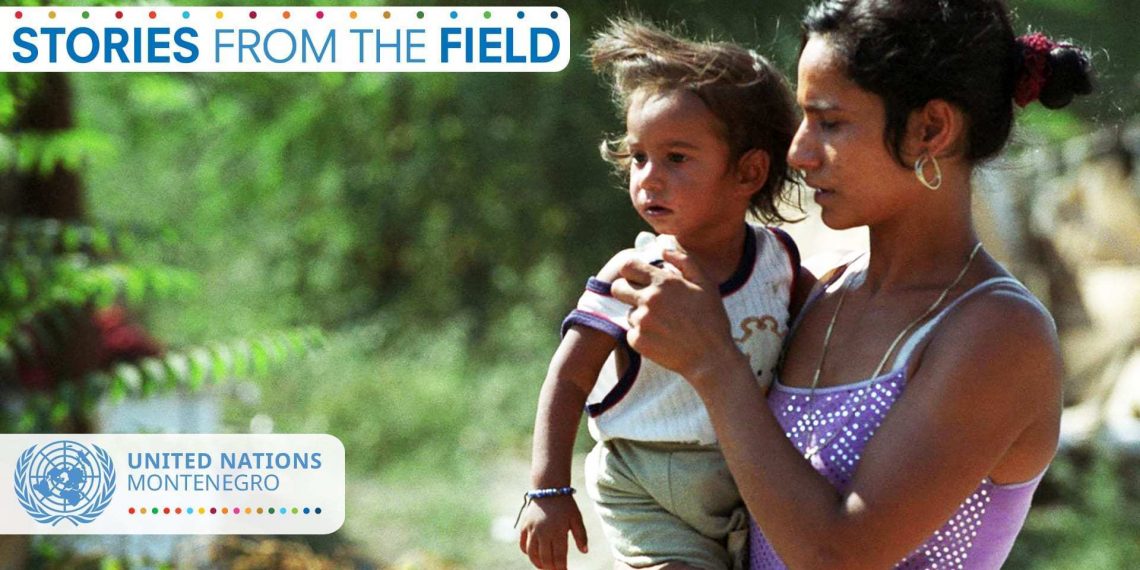By Fiona McCluney, UN Resident Coordinator in Montenegro
Fatima* is a 15 years old Roma girl from just outside Podgorica, Montenegro, who was forced into an early marriage. She is not alone. Although the rate of child marriage in the country is low – around 1% of the total population – the percentage is significant within the Roma and Egyptian communities of Montenegro. According to 2013 data almost one of three girls aged 15-19 from these communities is married.
The profound impact of child marriage
When a girl is forced to childhood marriage, she faces immediate and lifelong consequences. The chances of her finishing school drop considerably and the likelihood she will experience domestic violence rises. She is more likely to become pregnant in her teens and to risk death through complications in early pregnancy and childbirth. Complications not experienced by women in their 20s or 30s.
The devastating practice of child marriage has no single cause, rather results from the complex and dynamic interaction of linked factors. Factors such as the cycle of poverty, lack of opportunities or alternative options, poor education, social and cultural norms and expectations of girls, and deep-seated discrimination.
Education as a key to empowerment
Education is the most powerful tool to help girls step out of poverty. According to global statistics, girls with secondary or higher education are three times less likely to marry by 18 than those with no or little education.
But succeeding and staying at school is far harder for Fatima than for her non-Roma peers. Coming from a socially isolated community, she faces number of obstacles which hinder her success. These include the language barrier, poor socio-economic conditions in her family, and often social exclusion, stigma and discrimination from peers and teachers. Her employment opportunities beyond school are also limited.
As the harmful impact of child marriages is more widely known, many countries have set a legal minimum age for marriage. But even where laws exist, the practice persists. It is often casual attitudes that fuels the practice. The attitude that child marriage is a traditional practice – not a violation of children’s rights – contributes to its perpetuation. These views need to end.
There are solutions
There is no one or direct solution to that will change early marriage practices. Instead, a comprehensive, interlinked approach is required. An approach requiring political will and a long-term vision.
What does it mean? For example, an approach making marriage registration compulsory for all and raising the minimum age for marriage to 18 might work. But it would be critical to work closely with the Roma and Egyptian communities in Montenegro in developing new laws. Parallel interventions that offer economic support and incentives for girls and their families are needed. Interventions that improve access to quality formal education for girls and boys; pay special attention to academic (under)achievers and put special measures in place to effectively prevent dropout from schools. In addition, we are bound to diligently investigate and sanction the cases of child marriage, as none of 50 reported cases of forced marriage led to an indictment.
Overall, it is critical to offer opportunities that fulfil Roma and Egyptian girls’ and boys’ aspirations and create real alternatives to child marriage.
Leave no one behind
There is some good news, though.
The 2030 Agenda for Sustainable Development – a vision of a better world in which no one is left behind, offers a direction. This bold development plan adopted in 2015 by 193 UN member countries – including Montenegro – defines 17 Sustainable Development Goals. Ending child, early, and forced marriage is at the heart of Goal 5 – To achieve gender equality and empower all women and girls. This makes early marriage an issue an international and national priority, including for Montenegro.
According to a UNICEF report, the practice of child marriage has continued to decline around the world. During the past decade, the proportion of young women who were married as children decreased by 15 per cent, from 1 in 4 (25%) to approximately 1 in 5 (21%). Still, approximately 650 million girls and women alive today were married before their 18th birthday. While the global reduction in child marriage is to be celebrated, no region is on track to meet the Sustainable Development Goal target of eliminating this harmful practice by 2030.
Fatima – and other girls like her – does not need flowers today. She needs a society that will ban child marriage, invest in education and empower young people. As said by the United Nations Secretary-General António Guterres: “A girl who is married as a child is one whose potential will not be fulfilled. This is an issue that we must address everywhere in the world.”
*The real name is changed for the purpose of protecting privacy.
The UN team in Montenegro works on protecting and empowering girls through number of interventions, including UNICEF’s programmes on inclusion in education starting from the pre-school level, quality education, prevention of drop-out, building socio-emotional skills and protection of girls and boys from violence including child marriages; UNHCR’s interventions on supporting refugee and asylum seeking families, including girls from those families; IOM’s support to combat human trafficking, including young girls-victims of forced marriages, UNDP’s programme on gender equality and women’s empowerment, as well as continuous joint UN work on ending violence against girls and women.
International Women’s Day on 8 March is a day when we mark the long march for equality, rights and empowerment of girls and women. This struggle is not over. It not only takes place in the political arena but also in the everyday struggles of individual girls and women.
For more on ending violence against women and girls – including child marriage – please visit the Spotlight Initiatives’ interactive tool aimed at educating children about these issues: https://herstoryourstory.net/en/



